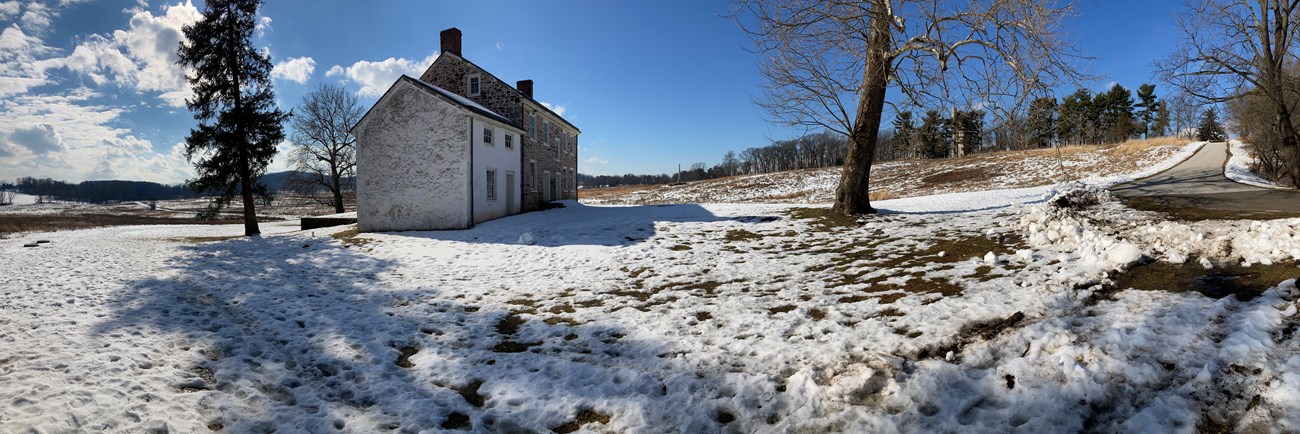
NPS Photo / G. Purifoy Valley Forge National Historical Park is home to numerous historic buildings that reflect its multifaceted history and contribute to the significance of the park. Historic BuildingsThe park contains 81 historic buildings, all of which were constructed between the mid-18th century and the mid-20th century. Of these 81 structures, 12 have been identified as buildings that were standing, in whole or in part, at the time of the encampment (winter 1777-78). These are primarily domestic structures with a few associated outbuildings. An additional three buildings are probable encampment period, but have not been definitely confirmed as such. Non-encampment historic buildings relate to later activities and include farmhouses, estate dwellings, small village residences, barns, and sundry outbuildings. There are two buildings that are associated with the sites of officers’ quarters. The circa 1816 Maurice Stephens house is thought to have been built on the site of an earlier building that was used as Huntington’s quarters. The Philander Chase Knox residence is associated with the site of Maxwell’s quarters but was constructed circa 1783 and subsequently greatly altered in a series of building campaigns extending into the 20th century. Historical research in primary source materials has left some doubt about the accuracy of these associations. Post-Encampment Historic BuildingsMany of the 66 post-encampment historic buildings have state and local significance in their own rights. For example, the Philander Chase Knox Residence is significant as an example of the Pennsylvania farmhouse type of the Colonial Revival style of the early 20th century. The Walnut Hill barn is an outstanding example of the buildings used in state-of-the-art, large-scale farming practices that developed in the mid-19th century. Historic Monuments and MemorialsThere are 40 historic monuments and memorials in the park – structures that commemorate an individual, group, event, or an idea. The state park commission invited the governments of each of the 13 states (former colonies) to erect monuments on the sites that had been occupied by their brigades. All the states except Connecticut have done so. Some monuments mark sites associated with the encampment. For example, the National Memorial Arch (a national historical landmark) is sited on the high point of Gulph Road – the road on which the Continental Army marched into the encampment. The Sullivan’s Bridge monument marks the site of the bridge over the Schuylkill River that Washington ordered built. Other monuments commemorate the contributions of individuals or groups, for example the equestrian statue of General Wayne, the statue of Baron von Steuben, the memorial to patriots of African descent, and the memorial to unknown soldiers. Park buildings and structures are intended to be maintained through cyclic maintenance funding programs and rehabilitated when necessary through the line-item construction program. Neither source provides sufficient funds for the preservation of historic buildings and structures, which require a great deal of specialized craftsmanship and currently rare materials. |
Last updated: July 12, 2022
